This non-native vine thrives in the eastern portion of North America. When you can identify it, leave a comment below with the common name and scientific name. Also, please share any personal story you may have about this plant.
ANSWER (subsequently added to this post to facilitate the “search” function for these images): Asiatic bittersweet (Celastrus orbiculatus)


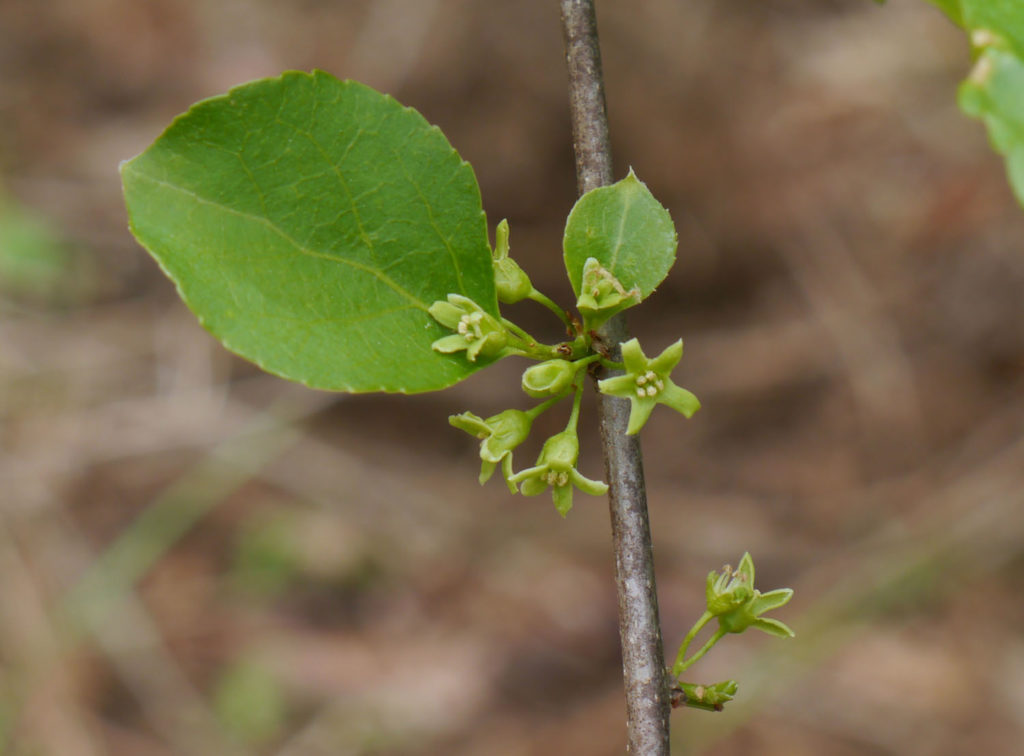
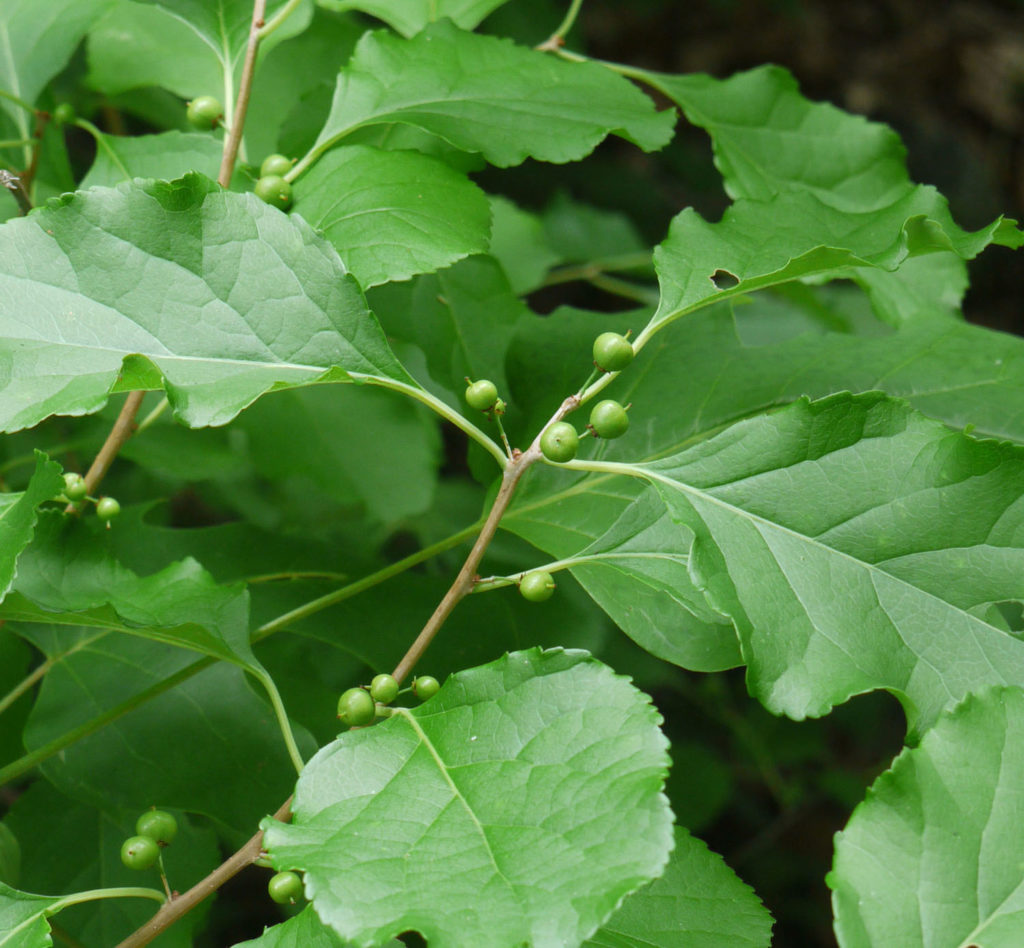
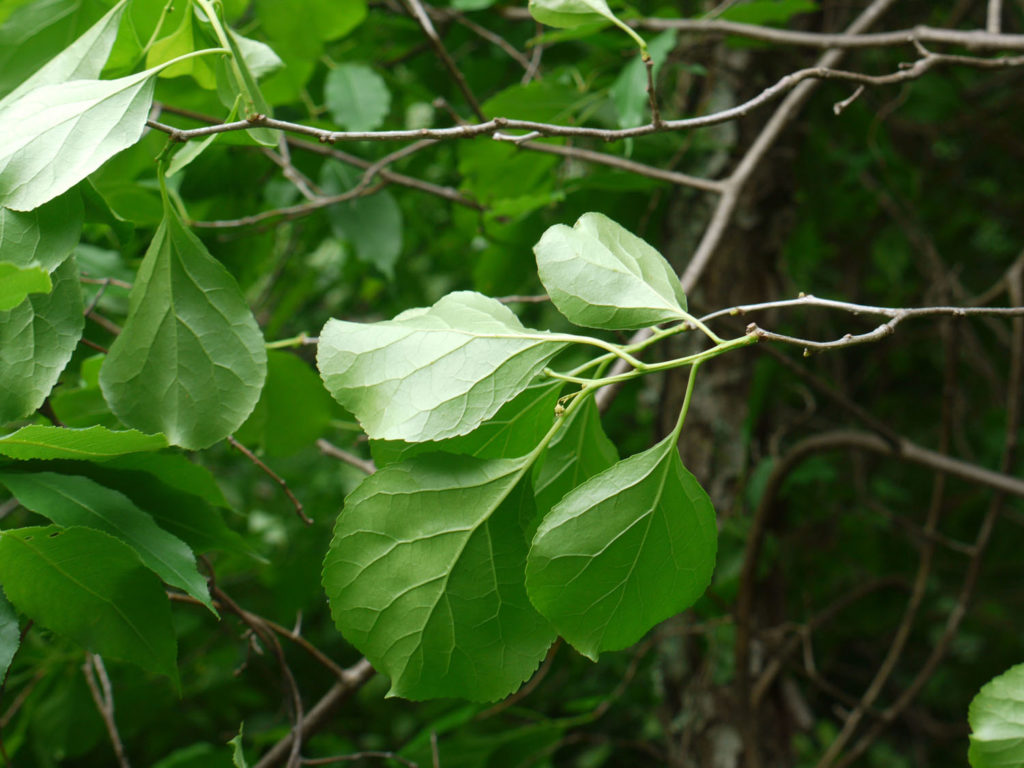

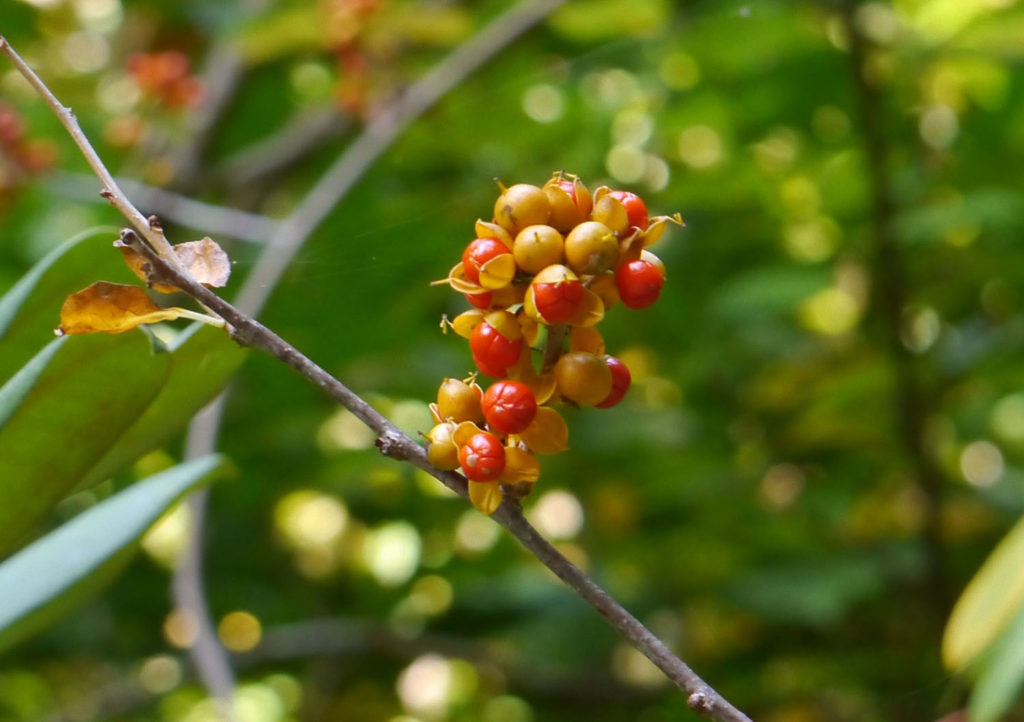
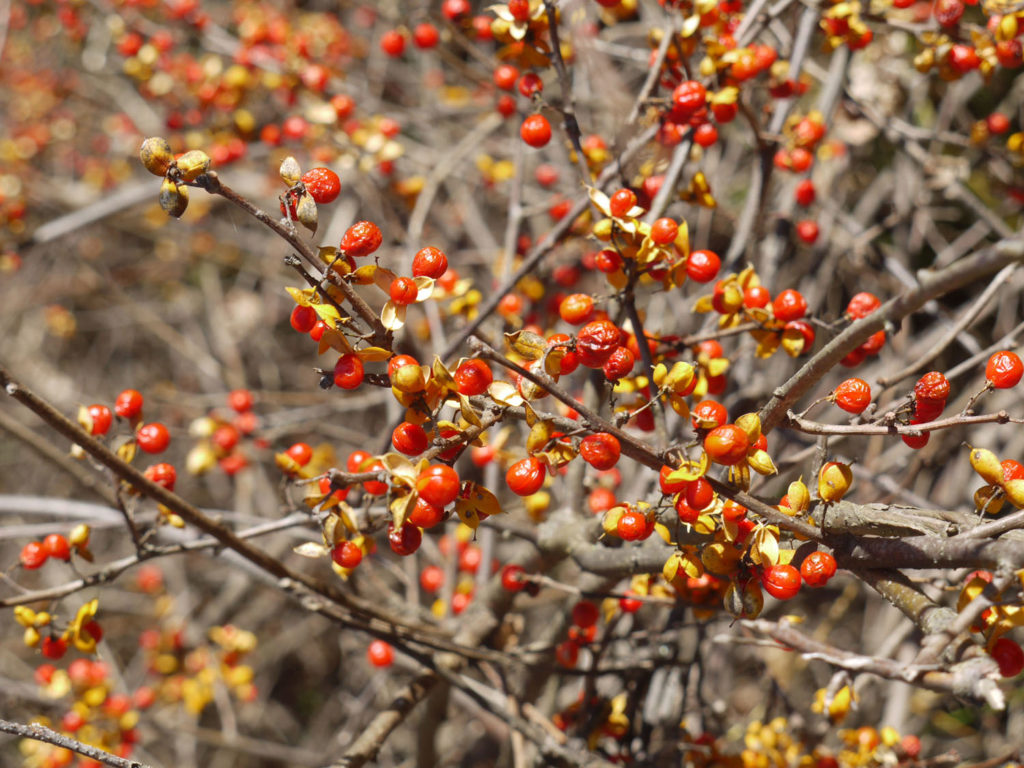
Ah yes… this is Celastrus orbiculatus (Asian Bittersweet). I’ve watched many birds eat the fruit of this vine.
Oriental bittersweet, Celastrus orbiculatus, an invasive pest
If they turn blue when ripe they are Huckleberry!
Oriental bittersweet one of the worst exotic pests we have in Western NC!
Oriental bittersweet. Hard to get rid of and control, but it needs to be done.
Yes, this is Asiatic — or Oriental — bittersweeet (Celastrus orbiculatus). Unfortunately, my property is “blessed” with this plant and I’m constantly working to remove it from the vegetable garden as well as surrounding trees.
So how do we tell the difference between Oriental and American bittersweets? One is a non-native invasive, one *is* native. Seems important to differentiate them.
http://www.kansasnativeplants.com/guide/plant_detail.php?plnt_id=255
bittersweet it will take over even kill trees by smothering them out.
We just moved to a rural mostly wooded property in central MA. Oriental bittersweet is everywhere despite obvious attempts by the former owner to control it. I spent the spring pulling up new shoots, a great time to get ahead of this invasive as well as burning bush, as they are the first things leafing out at the time. Now I am working my way through various parts of the property to pull out the more mature plants where I can, cut them from the trees they are climbing, and cut them below ground when I can’t pull them out. They grow extremely quickly, overtopping and eventually strangling the trees they climb. I am planning to very carefully apply pesticide to re-emergent plants in the fall.
Keelie: american bittersweet has terminal clusters of flowers while oriental bittersweet flowers (and then seeds) along the length of its stem. Also the leaves of oriental bittersweet are more rounded than american, and the seed is yellow and red versus orange and red for american. Unfortunately I’ve read that the two plants can hybridize. This publication about distinguishing between the two is very helpful: https://www.fs.usda.gov/Internet/FSE_DOCUMENTS/fsbdev3_017307.pdf